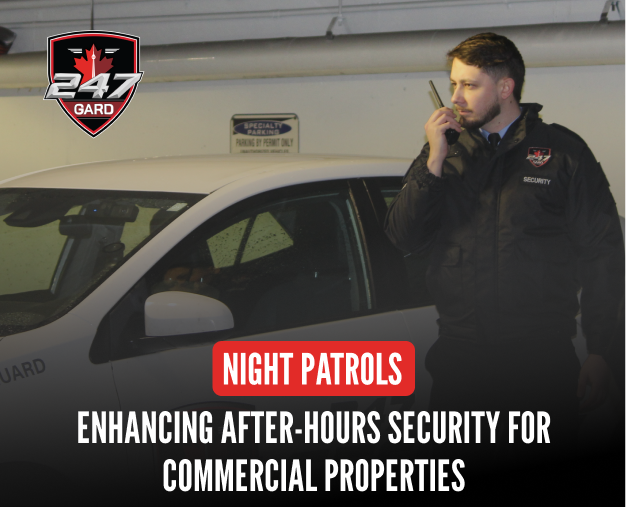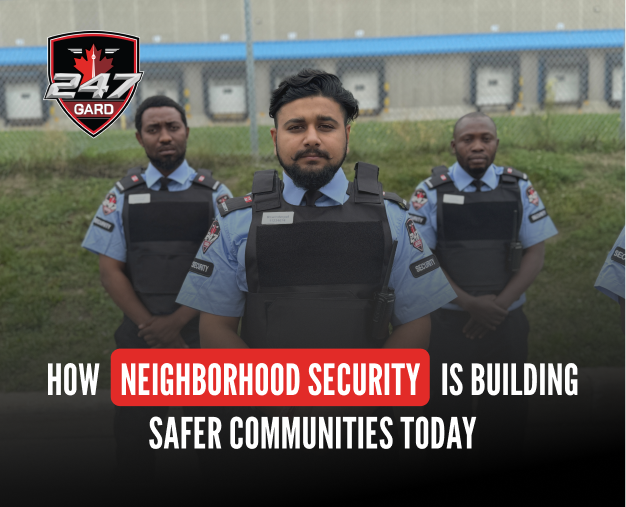Ensuring Patient and Staff Safety: Security Solutions for Long-Term Care Facilities
- By - 247 Gard
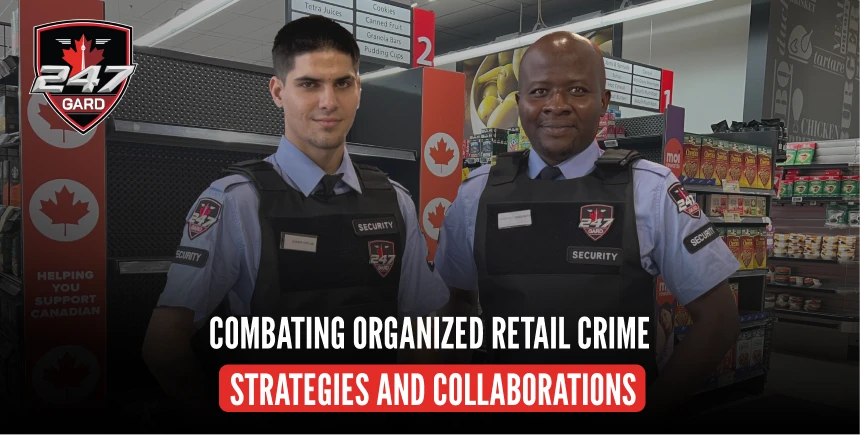
The Safety Challenges in Long-Term Care Facilities
Running a long-term care home comes with a unique set of challenges, especially when it comes to safety. Unfortunately, healthcare security services in Canada are reporting a noticeable increase in security-related incidents at long-term care (LTC) facilities. Just like residential services contribute to a safer society, healthcare safety also plays its part in improving. These include unauthorized access by outsiders, patients with dementia wandering off-site, and even instances of aggression directed toward overworked staff.
What makes long-term care facilities especially vulnerable? For starters, many residents experience cognitive decline, making them more susceptible to confusion, wandering, or becoming victims of unintended harm. Combine that with limited staff-to-patient ratios and an open-access environment, where family, vendors, and support workers regularly come and go, and it creates the perfect storm for potential security breaches.
These are not just operational hiccups; they carry serious legal and reputational implications. A lapse in patient safety solutions could result in liability claims, loss of community trust, or even the suspension of operations. For long-term care facility security in cities like Toronto, Vancouver, or across Ontario, overlooking these risks isn’t an option.
That’s why elder care security measures, medical facility security guards, and modern access control in healthcare facilities are no longer “nice-to-haves.” They’re essential building blocks of a care model that values safety as highly as it does compassion.
The Business Impact of Poor Security
When security slips, the ripple effects on a long-term care facility go far beyond one isolated incident. Unsafe work conditions often lead to higher staff turnover, especially in a field already facing staffing shortages. When employees don’t feel protected, even the most dedicated caregivers start looking elsewhere.
Then there’s the regulatory side. Failing to implement adequate elder care security measures or visitor screening procedures can trigger failed inspections, licensing issues, and even government penalties. These setbacks not only hurt your compliance record but can severely limit your operating capacity.
From a financial standpoint, the consequences don’t stop there. Poor long-term care facility security often results in higher insurance premiums and increased liability costs. Providers of healthcare security services in Canada have seen claims spike in facilities without proper access control or emergency response in long-term care protocols in place.
And let’s not forget the residents. Families are more cautious than ever when selecting care for their loved ones. One well-publicized lapse in safety could tank occupancy rates and erode the trust it took years to build.
In cities like Toronto and Vancouver, where the competition is stiff and expectations are high, your medical security services must be strong enough to protect not just your people, but your reputation too.
Security Solutions Developed for Long-Term Care Facilities
Keeping residents and staff safe in a long-term care facility isn’t just about locking doors; it requires a thoughtful, layered approach. Each piece plays a vital role in building a secure, responsive environment, from access control to training drills.
Access Control Systems
One of the most effective patient safety services starts right at the front door. Access control in healthcare facilities helps ensure that only authorized personnel can move through secure areas. Keycard systems allow you to restrict entry to medication storage, administrative zones, and patient wings.
Real-time visitor screening procedures, including digital sign-ins and photo verification, offer transparency while reducing the risk of intrusions. Monitoring side and backdoor access also prevents unintended entries, especially in larger facilities.
24/7 Surveillance and Monitoring
Surveillance is the backbone of any strong, long-term care facility security system. Strategically placed CCTV cameras—especially in communal areas, hallways, and exit points—help deter misconduct and assist in incident reviews. In some cases, medical security solutions in Ontario also include integration with motion detectors and alarm systems.
Modern healthcare security services in Canada often include remote access dashboards, allowing administrators to monitor feeds in real-time, even off-site. This capability is particularly useful for regional managers or emergency response teams. Exceptionally, 247Gard is equipped with advanced surveillance and monitoring to address all security concerns that could disrupt the healthcare services.
On-Site Security Personnel
Having trained medical facility security guards on-site is still one of the most effective ways to keep staff and residents safe. These professionals know how to de-escalate confrontations, respond quickly to emergencies, and handle visitors who pose a threat.
Nighttime shifts in LTC homes can be especially vulnerable. A visible, proactive presence of patrolling security guards can deter aggressive behaviour and improve confidence among staff and families alike.
Holistic Security Shield
Medical Facility centers are prone to catching fire due to sparking or short-circuiting in power rooms. This fire outbreak can burn down valuables and even trigger deaths, leading to unbearable loss.
Wander Management Systems
Patients with cognitive conditions such as Alzheimer’s or dementia are at risk of wandering. RFID-enabled bracelets or badges can send alerts when residents approach restricted areas or exits. Many systems now integrate with EMRs, allowing seamless tracking and faster intervention.
Staff Training and Drills
Security tools are only as effective as the people using them. That’s why regular training on emergency response in long-term care is vital. From lockdown protocols to conflict de-escalation, drills help staff act swiftly and confidently when it matters most. Documentation and incident reporting procedures should also be part of the routine, ensuring nothing falls through the cracks. At 247Gard, every guard is thoroughly educated and practically trained so that they can deter real-time security threats efficiently.
Benefits of a Comprehensive Security Plan
A well-rounded security plan isn’t just about preventing incidents; it’s about creating an environment where people feel safe, supported, and valued.
For staff, knowing there are clear procedures and support systems in place can make a major difference. It reduces stress, improves morale, and encourages long-term commitment. When staff feel protected, they can focus more on care and connection, not just caution.
For residents and their families, strong security measures offer peace of mind. When loved ones see that a facility prioritizes safety, from access controls to emergency preparedness, it builds trust and confidence in the quality of care.
A comprehensive plan also helps long-term care homes stay aligned with provincial health and safety regulations. Regular assessments, documented procedures, and staff training make compliance smoother and less reactive.
And in a competitive sector, a strong security strategy can even become a point of distinction. It signals to regulators and potential funders that the facility is proactive, responsible, and ready to meet higher standards — a meaningful edge when pursuing accreditation or additional funding.
Because safety isn’t a side feature; it’s foundational to care.
Compliance Knowledge:
Your security provider should be well-versed in the regulations and safety standards that govern LTC facilities. This ensures that their approach aligns with provincial health and safety requirements, keeping your facility compliant and prepared for inspections. A notable example of such a security agency is 247Gard, which creates a safe environment for healthcare practices while staying in line with the guidelines defined by the Canadian Government.
Regular Audits and Adaptability:
A good security provider doesn’t stop at installation. They should offer regular audits to evaluate the effectiveness of security measures and adapt their services as your needs evolve. A proactive approach to audits and updates ensures ongoing safety and compliance.
By asking the right questions and focusing on these key areas, you can build a safer and more secure environment for everyone in your care.
Case Study: Safer Days at Willow Grove Residence
Willow Grove, a long-term care facility in Ontario, was grappling with several safety challenges: patient wandering, unauthorized visitor access, and rising staff burnout. The administration partnered with a healthcare security services provider in Canada to reassess and redesign its security infrastructure.
They introduced electronic access control in healthcare facilities, installed a network of CCTV systems with remote monitoring, and brought in trained medical facility security guards. A wander management system was also implemented for residents with cognitive decline.
Within three months, the facility saw a 45% reduction in safety incidents. Staff reported feeling more secure on the job, and family members noted improved peace of mind. The facility’s reviews reflected this shift, emphasizing both security and quality care. These tangible improvements showcase the value of thoughtful, proactive elder care security measures.
Conclusion
Security for long-term care facilities is no longer optional; it’s essential. With increasing demands on staff and rising risks to residents, facilities across Canada are rethinking their safety protocols. Whether it’s integrating monitoring systems for patient safety, deploying trained security personnel, or utilizing advanced visitor screening procedures, each layer provides real protection.
If you manage or oversee a long-term care home, now is the time to act. Start with a full security audit. Look for gaps. Think long-term.
Contact 247 Gard, a trusted provider of healthcare security services in Toronto, Vancouver, or anywhere in Canada, for a need-specific consultation. Your residents and staff deserve the safest environment possible.
Recent Posts
Blogs
Your Source for Safety News


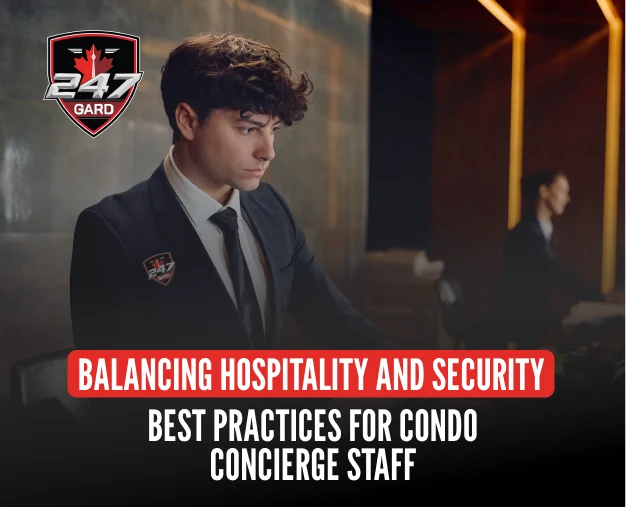

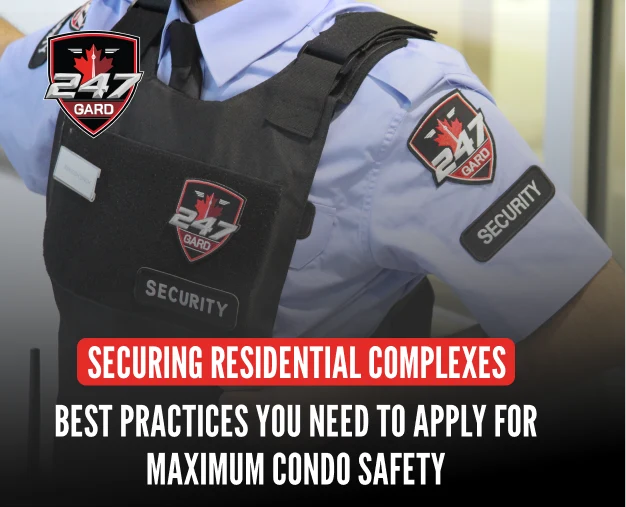
Ensuring Patient and Staff Safety: Security Solutions for Long-Term Care Facilities The Safety Challenges in Long-Term Care Facilities Running a long-term care home comes with a unique set of challenges,
Combating Organized Retail Crime: Strategies and Collaborations Organized retail crime is no longer limited to shoplifting. It has evolved into a highly coordinated, multi-store threat that affects product margins, endangers
Protecting High-Profile Individuals: An Introduction to 247 Gard’s Executive Protection High-profile individuals attract more than attention. They attract risk. From executives to celebrities, visibility creates vulnerabilities in unpredictable environments. Canadian
A Dual Expectation for Modern Condo Living Condominium living continues to evolve as more residents seek environments that blend comfort with protection. In this environment, the role of the condominium
Why Do Residential Complexes Need Professional Security Services? In today’s urban environment, relying solely on concierge staff or DIY security measures is no longer enough. While these solutions may offer
Lorem ipsum dolor sit amet, consectetur adipiscing elit. Ut elit tellus, luctus nec ullamcorper mattis, pulvinar dapibus leo.

